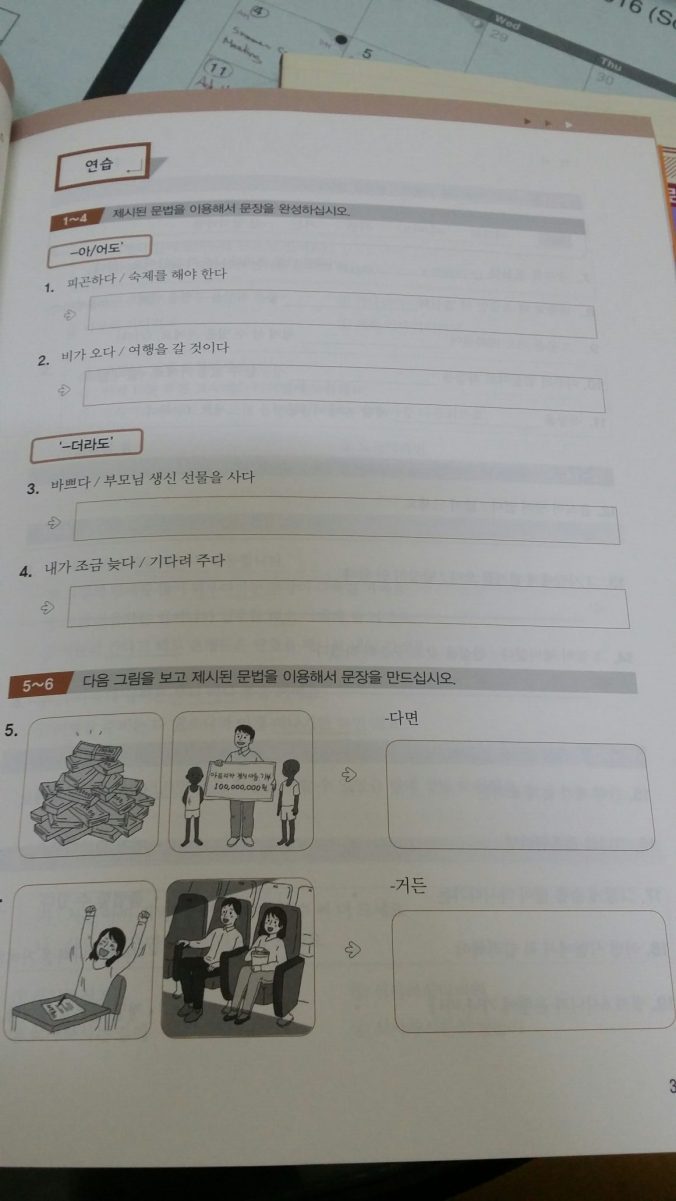Hi! I have been out for a long while! All I can say is that working at a school is specially exhausting during summer. I still can’t believe I taught 3 (week-long) English camps. Also, my free time has been spent studying Korean and traveling a bit hahaha.
Over the past 2 months I have bought a couple of books. This time around I bought some more books to help me to study for TOPIK II.
I. TOPIK related books:
I have talked before about how my writing skills suck in Korean so I ended up getting 유학생을 위한 A+ 글쓰기. The book is divided in two sections. The first one is to learn sentence patterns according to what you are trying to do. Then on section two, you read examples and practice it. So far I haven’t used section two. I like it because in HOT TOPIK II 쓰기, they assume you know it so they give you little practice. Below there’s some more pictures.
I also bought TOPIK 어휘•문법 다자기. I like their vocabulary as they give you a list, then you practice that vocabulary briefly, then they give you their synonyms and antonyms. More practice, then some proverbs or idiomatic expressions. After that the grammar section starts. They give you a set of grammar points with similar functions (like reason, cause, etc.). Now, their grammar explanation sucks for the most part but it has a good grammar practice section and a lot of examples. Some more pictures below:

I also bought New 스타일 한국어 관용 표현. I like it, it’s cute and sort of understandable.
II. Korean books:
I’m an avid reader and an impulsive buyer so I also ended getting new reading material LOL.
I bought volume 3 of 우리 사이 느은 and I don’t feel any guilt over it hahaha. I’m a big Potterhead so I also bought 해리포터 마법사의 둘 1. I decided to buy 너에게 하고 싶은 말 when I read an excerpt and I just find myself reading it a lot.
III. Chinese Language Books:
I started learning Chinese at the end of summer or so. I went to China during Chuseok so I got some more books to learn. The series it’s called New Practical Chinese Reader 3rd. Edition. I got the textbook and the Reader’s Companion book (I couldn’t find the workbook though). Then when I came back to Korea, I bought the 하루 5분 중국어 쓰기노트 초급. I really hate that it doesn’t give me stroke order so I just go by the general stroke order rule LOL.

That’s pretty much it. I believe my next post will be about TOPIK II writing, but don’t wait for it hahaha. Until next time~












